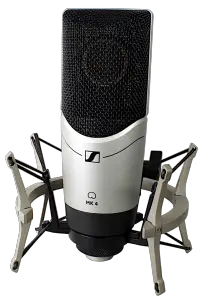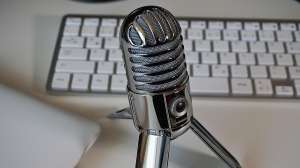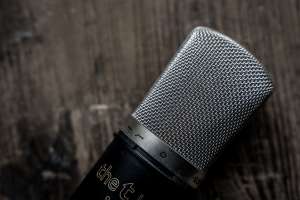Condenser microphones are among the most versatile mics available, and they are ideal for use in studios and for recording. Condenser microphones are used for recording, streaming, and for live performances, but they can be challenging to use. The versatility and usability of these microphones may have led you to wonder if all condensers need phantom power to work?
All condenser microphones do require phantom power to function. Phantom power electrifies the diaphragm in the mic, which makes it very sensitive, and allows it to amplify audio very clearly, producing very high-quality audio. Condensers do not work without phantom.
Phantom power is required to run certain audio devices, but some microphones can be used without it. However, some mics do need this external source of power, and it can be confusing to define which mics do not need it.
Let’s explore the world of condenser microphones to determine if they all need phantom and how to tell if your microphones need phantom power or not.
Do All Condenser Microphones Need Phantom Power?
Condenser microphones are a favorite in recording environments, as well as for use for spoken words such as podcasts, for recording instruments, for live speaking, for live vocal performances, and even for streaming and virtual communications.

These microphones are among the most versatile of all. Condenser microphones produce clearer and more well-defined high-quality audio than other types of microphones do, even if they are not as well-made or expensive as other mics.
The wide range and functionality of condensers make them very popular, but there is one problem: condenser microphones require phantom power.
The unfortunate reality is that all condenser microphones require phantom power. These microphones require an electrical current to activate the internal diaphragm backplate within the microphone.

When this backplate is activated, any sound waves that come into contact with it are slightly electrified and amplified.
This type of amplification is why condenser mics are as good as they are. This technology makes condenser microphones very sensitive and produces very high quality, clear audio without any distortion. This makes the audio from these mics very easy to use, simple to mix, and highly functional.
Every condenser microphone requires phantom power to activate this internal mechanism, and without it, these microphones would not be condensers, and they would not function in the same way, nor would they be as functional.

What If You Don’t Use Phantom Power With A Condenser?
If you have a condenser microphone but you have no way of running phantom power to the microphone, will it work without it in any way? What happens if you use a condenser without phantom power?
The truth of this matter is that a condenser microphone will simply not work if it is used without phantom power.
You can plug a condenser mic in, run a cable to it, and try to use it, but without phantom power, there is not enough electrical current running to the mic to activate the internal mechanism that allows the mic to capture and transmit audio signals.

Condenser microphones work by using an electrical current to power an electrical sensor backplate that forms part of the internal diaphragm of the microphone. This diaphragm is what vibrates when sound reaches the microphone, and the electrical current electrifies the audio and amplifies it, producing very clear and high-quality audio even at very low levels.
Without phantom, your condenser microphones simply will not function at all. You will need some way to power them to use them, or you will need to switch to dynamic microphones that do not require phantom power to function.
(You can learn more about the differences between dynamic and condenser microphones here).
Can You Use A Condenser Without An Interface Or Mixer?
The most common way to supply power a condenser microphone is to use an audio interface or an audio mixer that has phantom power capabilities. These devices are the most common ways to power center microphones because they are usually used to send the signal from the mic to a computer for recording or streaming anyway, but what if you do not own an interface or a mixer?

Can you use a condenser microphone without an interface or a mixer? Well, yes, you can. All that a condenser microphone requires to function is an XLR cable and phantom power. Aside from interfaces and mixers, simple microphone preamps can be used to power the condenser microphone as well.
If you want to run a condenser directly into our computer or even into your tablet and phone, all you need is the appropriate adaptors and a microphone preamp that is capable of supplying phantom power.

This is the simplest way to use a condenser microphone with the least hardware possible. The reality is that condenser microphones do need phantom power to activate them, but so long as this energy is supplied to the microphone, it will function well for any audio purpose that you can think of.
How To Tell If Your Mics Need Phantom Power
If your microphone is not working, especially if it is a microphone that you have never used before or a mic that you are very unfamiliar with, you may need to determine whether or not this microphone requires phantom power to work or if there is another problem with the hardware.
To determine if your mix requires phantom or not is simple. All condenser microphones require phantom, so the first step is to determine whether or not this particular mic is a condenser or a dynamic microphone.

All condenser microphones are relatively large and typically have very sophisticated pop-filters or foam covers to protect the sensitive diaphragm of the mic.
These mics are usually larger, more square, or have a far larger or longer functional microphone section.
Dynamic microphones typically have very small internal diaphragms and therefore are usually smaller microphones, and the area of the mic that you speak or sing into is usually very small as well.
If the mic is larger than other mics, if it has a large area to speak into, or if it has a sophisticated pop-filter, then it is likely to be a condenser microphone, and you should try running phantom power to the mic before moving on to finding any other possible reasons why it may not be working.
You can learn about whether wireless microphones need phantom power here.
Conclusion
At the end of it, the important information that you need to know is that all condenser microphones require phantom power, and they cannot operate without it. The use of phantom power makes these microphones the useful devices that they are.
Without phantom power, a condenser does not function, and if these mics did not require phantom, they would not be as good as they are. Be sure that you understand the microphones that you are using to get the most out of them, and learn how they work to operate them safely.
References
